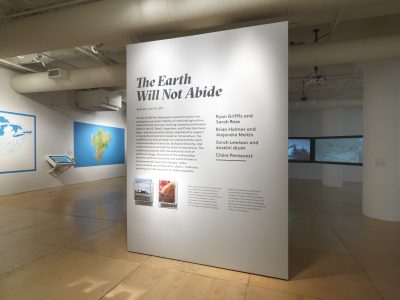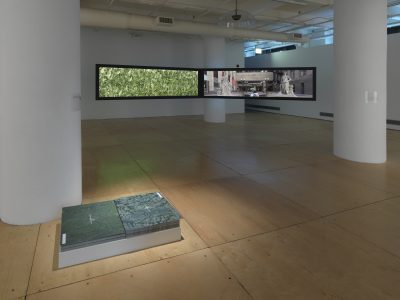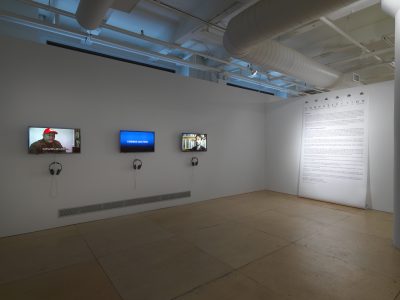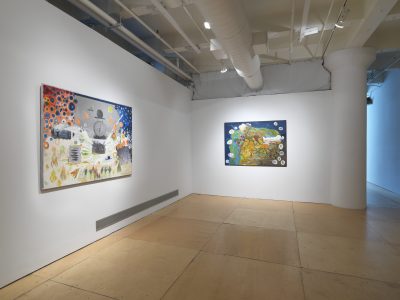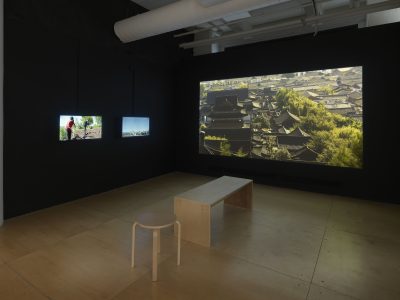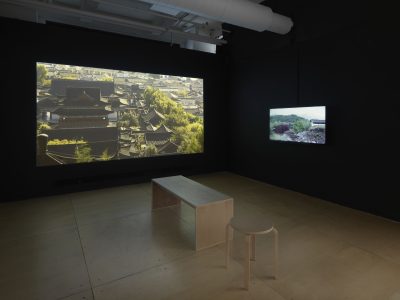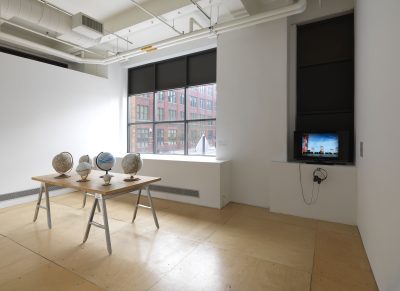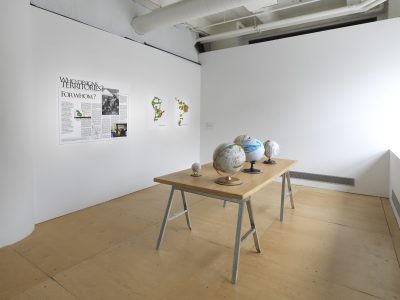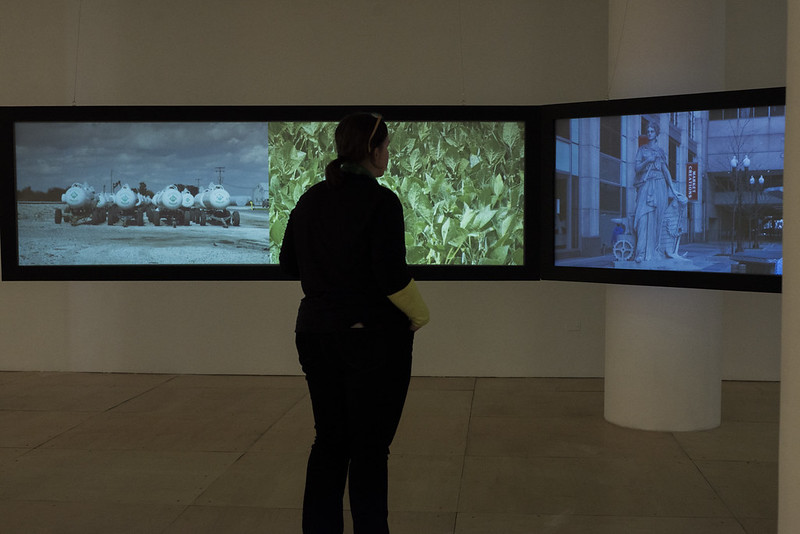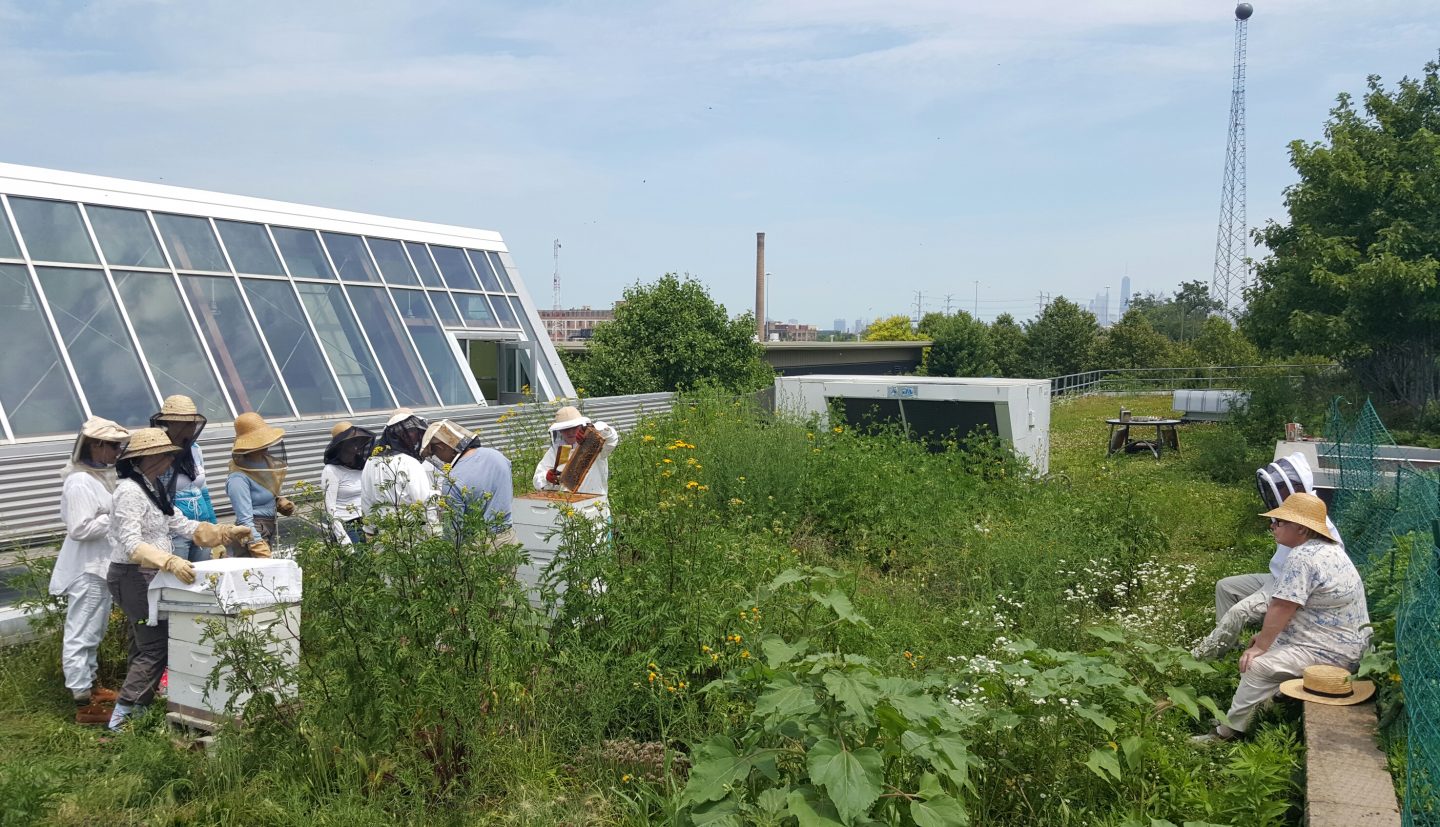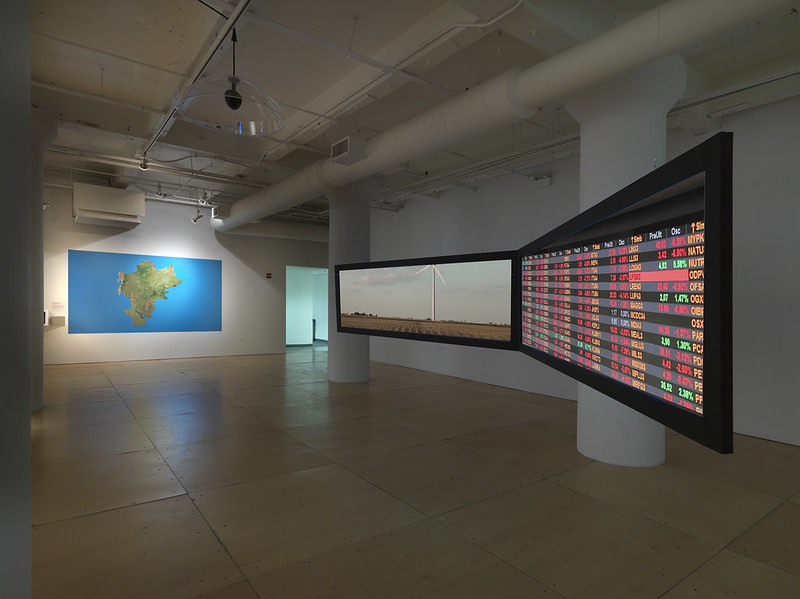Exhibitions
ABOUT THE EXHIBITION
The exhibition The Earth Will Not Abide poses questions about the ecological and social viability of industrial agriculture and extractive land use. These artist projects, spanning video, creative mapping, paintings, and installation, comprise an investigation of and aesthetic response to these questions, employing a variety of media and methods. Artists Ryan Griffis and Sarah Ross, Brian Holmes and Alejandro Meitin, Sarah Lewison and duskin drum, and Claire Pentecost draw connections between lands in the US, Brazil, Argentina, and China that have been—and are currently being—engineered to support an agricultural economy based on monoculture. The Earth Will Not Abide attempts to understand the rapid transformations in land use, biological diversity, and social structures wrought by these monocultures and envision how the analytical tools of political ecology allow us to visualize and critique this subject, while also pointing us in the direction of viable responses.
A Great Green Desert, a documentary project by Ryan Griffis and Sarah Ross, places viewers in the middle of a massive, yet often overlooked, terraforming project—the industrial corn and soybean regions of the US Midwest and the interior plateaus of Brazil. For The Earth Will Not Abide, Griffis and Ross bring together documentary fieldwork, archival and literary research, and interviews with experts, scholars, and activists. This resulting multi-channel video installation offers a combination of narrative, analytical, and aesthetic interpretations of the impact of extractive agriculture.
A research node and interactive website, Living Rivers is an extensive mapping project devoted to the Mississippi and Great Lakes watersheds. It shows these fluid ecosystems as they are inhabited by a multitude of creatures and as they are radically altered by human enterprise. Within Living Rivers, Brian Holmes and Alejandro Meitin propose four map categories that unfurl the map’s major themes: biomes (natural landscapes), which give way to anthromes (artificially conditioned territories). Wars trace conflicts over the proper management and care of these changing territories, while visions seek new paths for the future through the eyes of artists, scientists, philosophers, and mystics.
Analyzing the conception and purpose of territorial division, Alejandro Meitin’s Who Designs Territories? explores the transformation of land use in South America, particularly as a result of the infrastructure building campaign of the Initiative for the Integration of the Regional Infrastructure of South America (IIRSA), which connects the economies of South America through transportation, energy, and communication projects.
On the occasion of the 17th Congress of the People’s Republic of China in 2007, 30 years into the process of “reform and opening up,” President Hu Jintao pledged to extend agricultural modernization to the nation’s peripheries, including the indigenous highlands. Naxilandia is Sarah Lewison’s semi-fictional inquiry into the elective, empowered, and social nature of subsistence agriculture and its potential for resistance in the face of nation-building. Recorded over six months in rural Yunnan Province, this multi-channel video installation traces the contradictions created as subsistence life encounters enclosure.
As a written proclamation, the Cornstitution: An Anthermation of the Rights of Maize punfully inquires into the fundamental nature of corn itself, speculatively constructing rights as that which emanates from the possibilities of an organism perceived by humans but not for them. The Cornstitution pamphlet, offered as a multiple for viewers to read aloud and take home, is a portion of a larger performance and sculptural work in development by collaborative mother and son team Sarah Lewison and duskin! drum.
Claire Pentecost’s collaged painting series Pandora’s Basket originates with archival photographic images of farming experiments in the early 20th century, layered with images from her own documentary photographs exploring contemporary agricultural practices in Argentina and the US The paintings focus on several motifs: the specimen, the machine, the product, and the numbers.
Preceding the exhibition, the program series This Land/That Land: Discussions About Political Ecology and Place hosts artists, ecologists, farmers, and activists that deal with the politics of sustainability, the effects of industrial agriculture, conservation efforts, and land use and land rights to explore both traditional and emerging alternatives to the industrial food system.
ARTISTS
Ryan Griffis and Sarah Ross, Brian Holmes and Alejandro Meitin, Sarah Lewison and duskin! drum, Claire Pentecost.


